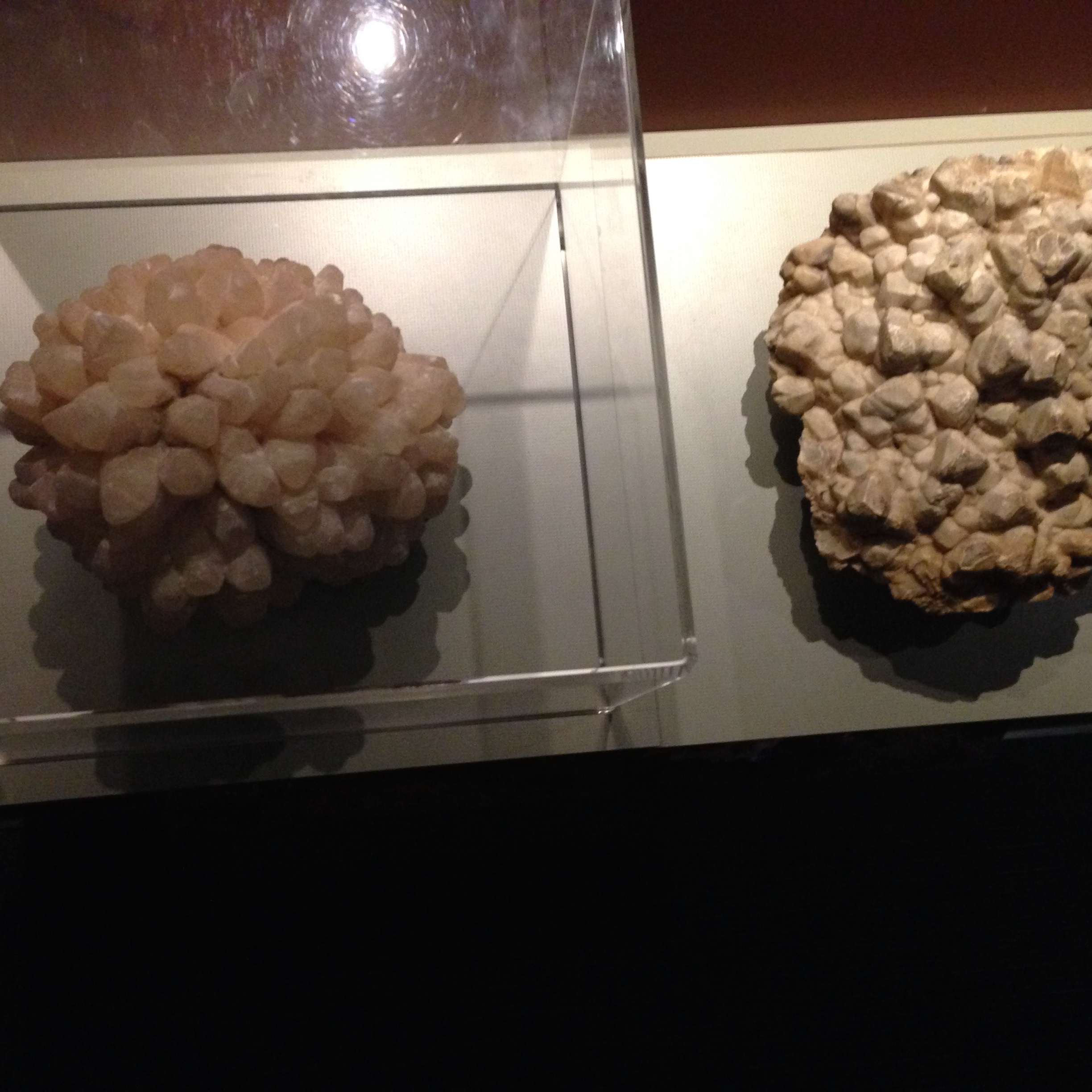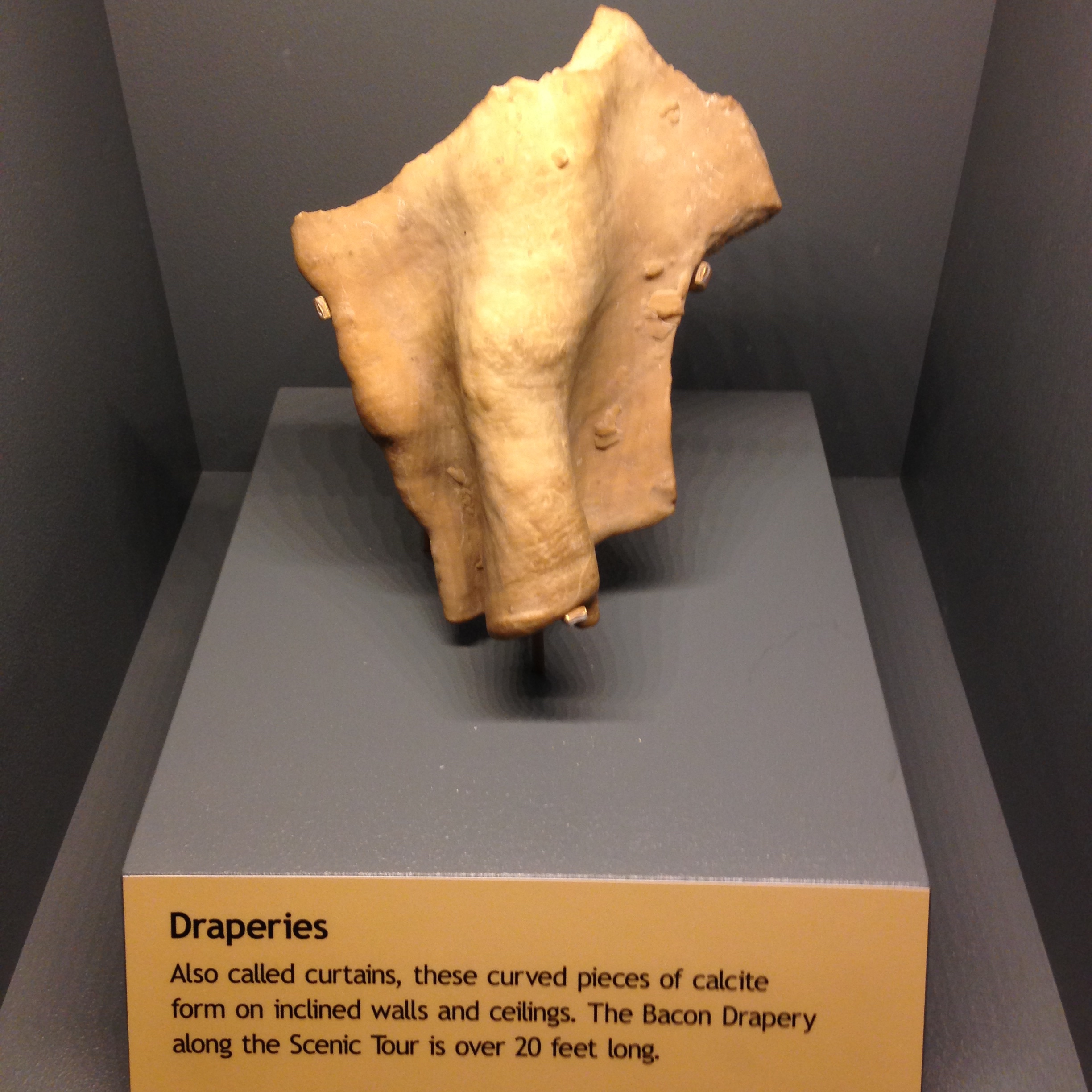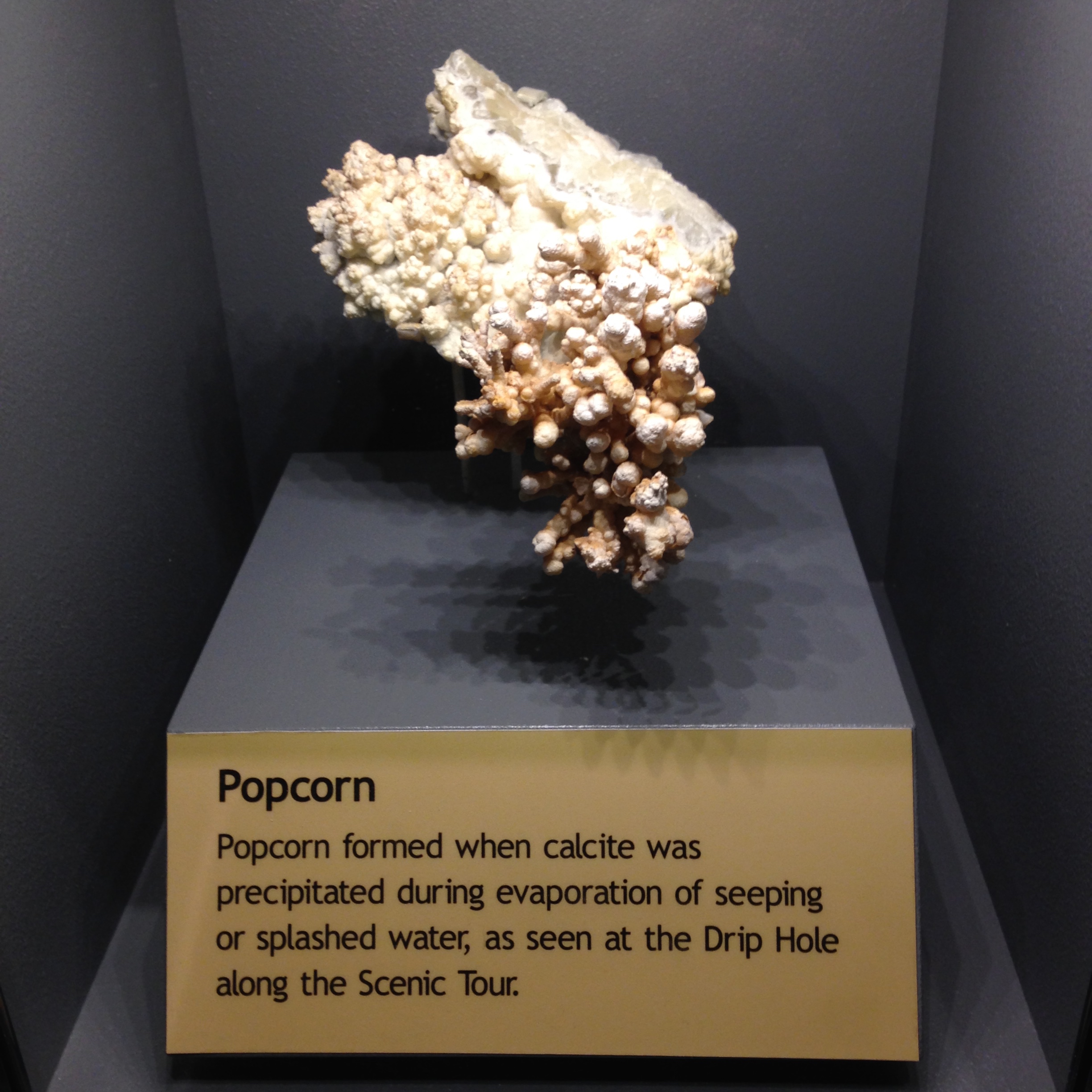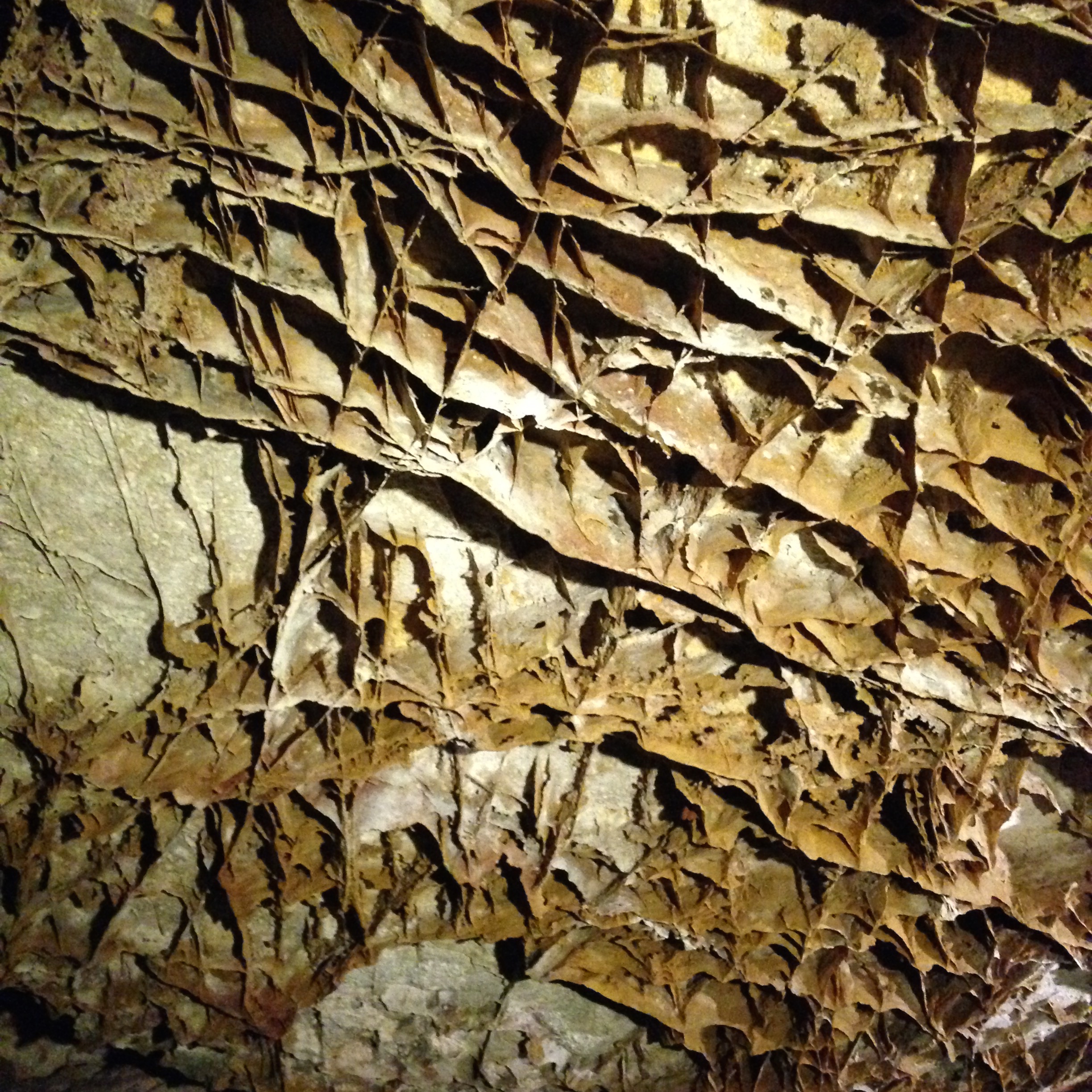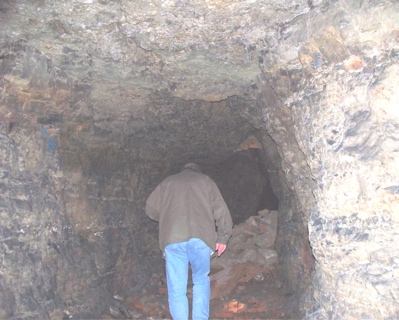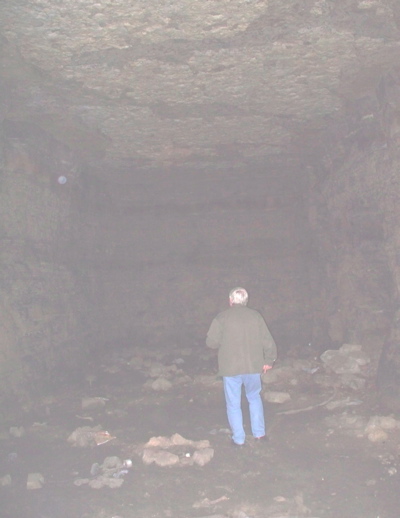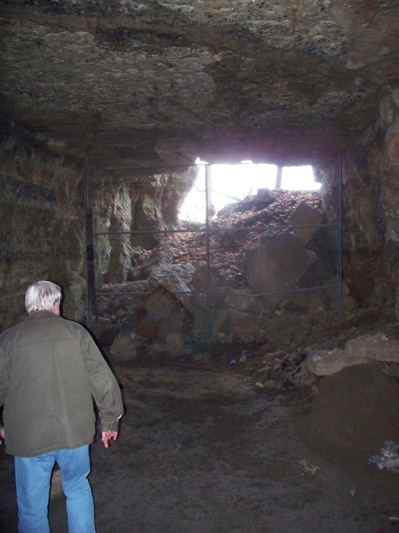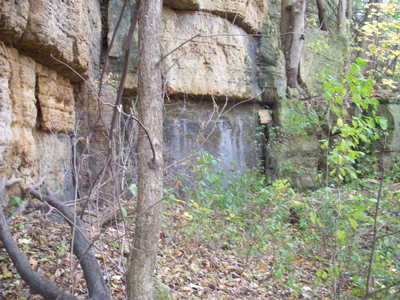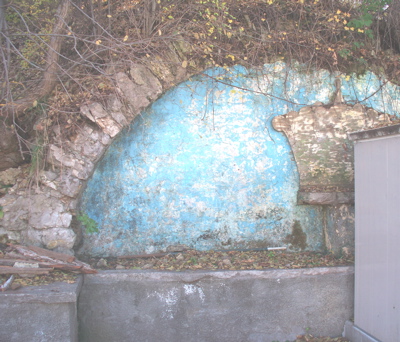Encyclopedia Dubuque
"Encyclopedia Dubuque is the online authority for all things Dubuque, written by the people who know the city best.”
Marshall Cohen—researcher and producer, CNN
Affiliated with the Local History Network of the State Historical Society of Iowa, and the Iowa Museum Association.
CAVES: Difference between revisions
No edit summary |
No edit summary |
||
| Line 1: | Line 1: | ||
CAVES. | CAVES. Caves are formed by natural processes that, over millions of years, have sculpted cavities extending sometimes miles into the earth. Tunnels nearly too narrow to squeeze through may reach wide passages. Shafts may reach up to let daylight in or the floor may drop away in the darkness. | ||
Taking advantage of the cool temperatures of caves, people used them for the preservation of dairy products. | By studying rock formations in caves, scientists have found clues to geologic events that occurred millions of years ago. | ||
Imagine a world of near total silence, absolutely without | |||
light, of constant temperature and usually without much | |||
motion of air or water. That apparent isolation is the cave | |||
world to which many living organisms have adapted and by that | |||
adaptation have come to depend upon such darkness and quietude. | |||
Add to this the exquisite, inanimate, fragile stalactites, | |||
stalagmites - even deposits of mud - that have taken centuries | |||
to form. We explorers with our lights and noise and fumes and | |||
heavy feet are alien intruders. Happily, we can enjoy our visit | |||
in little time and then leave the cave world to its own slow, | |||
dark tempo - if we are careful. The dilemma of cave exploration | |||
is to enjoy our visits to what seems 'another world,' and to leave | |||
that world unaltered, unspoiled, for all time."[[Image:IMG_2607.jpg|left|thumb|200px|Being touched changed (left) can change cave formations that originally looked like the one on the right. Photo: Wind Cave National Park, South Dakota.]] | |||
Rane L. Curl | |||
President National Speleological Society, Ann Arbor | |||
February 1973 (1) | |||
Almost all of them are made of calcite, the crystal of calcium carbonate. Different minerals and different movements in the water account for an incredible variety of cave formations. | |||
As water saturated with calcium carbonate drips through the ceiling of a cave, successive rings of calcite crystals form a tiny tube, a soda straw. If the tube fills, water flows down the outside and the calcite deposits thicken to become a stalactite. Water dripping onto the floor builds stalagmites, which in time may join stalactites to form a column. | |||
[[Image:IMG_2611.jpg|left|thumb|200px|Draperies. Photo: Jewel Cave National Monument, South Dakota]]Water drizzling along a slanted ceiling builds delicate sheets of rock, called cave draperies or curtains. The deposits begin as winding trails of calcite, which later extend downward and thicken. The white portions are almost pure calcite, while other minerals, mostly iron, make the orange and red stains. | |||
[[Image:IMG_2608.jpg|left|thumb|200px|Photo: Jewel Cave National Monument, South Dakota]] | |||
[[Image:IMG_2597_2.jpg|left|thumb|200px|Draperies. Photo: Jewel Cave National Monument, South Dakota]]When water seeps through tiny fissures in the bedrock, it can build incredible unlikely formations. | |||
Thin layers of calcite forms on the surface of pools as they evaporate. As they float, more and more calcite attaches to it in circular patterns. These "cave rafts" continue to float on the surface of the water as long as it is undisturbed until they reach a weight that pulls them under. | |||
Thicker deposits, called shelfstone form where the surface of the water touches the sides of the cavern or submerged columns. In shallow pools fed by dripping water, cave pearls may form. These small spheres are produced by layers of calcite forming around a grain of sand, much like oysters make the pearls they are named after. The agitation of the dripping water makes the pearls almost round and keeps them from sticking to one another or to the bottom of the pool. | |||
[[Image:IMG_2610.jpg|left|thumb|200px|Photo: Jewel Cave National Monument, South Dakota]]Flowerlike structures can grow. Crystals of calcium sulfate percolate through porous rock. As new crystals are formed from behind, the flower may grow in a variety of shapes. Large crystals may form in underwater chambers. | |||
Naturally occurring caves in the were sometimes enlarged to allow their use. Miners used caves to access deeper veins of [[LEAD]]. Caves offered practical if short-term shelter. | |||
Taking advantage of the cool temperatures of caves, people used them for the preservation of dairy products. Ice, beer and other alcoholic beverages could be stored in them. | |||
Caves and the presence of so many mapped and unmapped [[MINING]] tunnels in the bluffs, make the potential for destruction in the event of severe [[EARTHQUAKES]] more likely. The danger of caves (natural and man-made) collapsing have caused most to be permanently sealed. | Caves and the presence of so many mapped and unmapped [[MINING]] tunnels in the bluffs, make the potential for destruction in the event of severe [[EARTHQUAKES]] more likely. The danger of caves (natural and man-made) collapsing have caused most to be permanently sealed. | ||
| Line 11: | Line 47: | ||
[[Image:sealedcave-1.jpg|right|thumb|250px|Sealed caves can easily be missed.]] | [[Image:sealedcave-1.jpg|right|thumb|250px|Sealed caves can easily be missed.]] | ||
[[Image:sealedcave2.jpg|right|thumb|250px|The arched ceiling marks the entrance to a cave once used to store beer.]] | [[Image:sealedcave2.jpg|right|thumb|250px|The arched ceiling marks the entrance to a cave once used to store beer.]] | ||
--- | |||
Source: | |||
1. "The Underground World of Caves." Online: http://www.design42.com/caving/index.htm | |||
[[Category: Geographical Feature]] | [[Category: Geographical Feature]] | ||
Revision as of 03:14, 2 June 2015
CAVES. Caves are formed by natural processes that, over millions of years, have sculpted cavities extending sometimes miles into the earth. Tunnels nearly too narrow to squeeze through may reach wide passages. Shafts may reach up to let daylight in or the floor may drop away in the darkness.
By studying rock formations in caves, scientists have found clues to geologic events that occurred millions of years ago.
Imagine a world of near total silence, absolutely without
light, of constant temperature and usually without much
motion of air or water. That apparent isolation is the cave
world to which many living organisms have adapted and by that
adaptation have come to depend upon such darkness and quietude.
Add to this the exquisite, inanimate, fragile stalactites,
stalagmites - even deposits of mud - that have taken centuries
to form. We explorers with our lights and noise and fumes and
heavy feet are alien intruders. Happily, we can enjoy our visit
in little time and then leave the cave world to its own slow,
dark tempo - if we are careful. The dilemma of cave exploration
is to enjoy our visits to what seems 'another world,' and to leave
that world unaltered, unspoiled, for all time."
Rane L. Curl
President National Speleological Society, Ann Arbor
February 1973 (1)
Almost all of them are made of calcite, the crystal of calcium carbonate. Different minerals and different movements in the water account for an incredible variety of cave formations.
As water saturated with calcium carbonate drips through the ceiling of a cave, successive rings of calcite crystals form a tiny tube, a soda straw. If the tube fills, water flows down the outside and the calcite deposits thicken to become a stalactite. Water dripping onto the floor builds stalagmites, which in time may join stalactites to form a column.
Water drizzling along a slanted ceiling builds delicate sheets of rock, called cave draperies or curtains. The deposits begin as winding trails of calcite, which later extend downward and thicken. The white portions are almost pure calcite, while other minerals, mostly iron, make the orange and red stains.
When water seeps through tiny fissures in the bedrock, it can build incredible unlikely formations.
Thin layers of calcite forms on the surface of pools as they evaporate. As they float, more and more calcite attaches to it in circular patterns. These "cave rafts" continue to float on the surface of the water as long as it is undisturbed until they reach a weight that pulls them under.
Thicker deposits, called shelfstone form where the surface of the water touches the sides of the cavern or submerged columns. In shallow pools fed by dripping water, cave pearls may form. These small spheres are produced by layers of calcite forming around a grain of sand, much like oysters make the pearls they are named after. The agitation of the dripping water makes the pearls almost round and keeps them from sticking to one another or to the bottom of the pool.
Flowerlike structures can grow. Crystals of calcium sulfate percolate through porous rock. As new crystals are formed from behind, the flower may grow in a variety of shapes. Large crystals may form in underwater chambers.
Naturally occurring caves in the were sometimes enlarged to allow their use. Miners used caves to access deeper veins of LEAD. Caves offered practical if short-term shelter.
Taking advantage of the cool temperatures of caves, people used them for the preservation of dairy products. Ice, beer and other alcoholic beverages could be stored in them.
Caves and the presence of so many mapped and unmapped MINING tunnels in the bluffs, make the potential for destruction in the event of severe EARTHQUAKES more likely. The danger of caves (natural and man-made) collapsing have caused most to be permanently sealed.
---
Source:
1. "The Underground World of Caves." Online: http://www.design42.com/caving/index.htm


